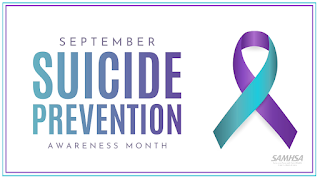How to Help Your Family with Mask Wearing
As the Stay at home order turns into a Safer at home order, many more people are out and about in the community. The CDC recommends that people wear cloth face coverings, whether or not they have active COVID-19 symptoms, as an additional method to help slow the spread of the virus. It is important to note that they do not recommend the wearing of a mask for people who are under the age or 2, are unconscious, have breathing problems or are unable to remove the mask without assistance.
That being said, wearing a mask feels foreign to many. Children and adults with disabilities may be more resistant to mask wearing, but there are a number of ways to make the experience more comfortable for them. Remember, that this is a new skill, and it may take a little bit of time to get used to it.
First, help them to understand the reasons for wearing a mask in public. There are a number of resources ranging from social stories to videos, depending on their needs:
https://www.autismlittlelearners.com/2020/04/wearing-mask-story-for-children.html
https://www.autismresourcecentral.org/social-stories-for-young-and-old-on-covid-19/
https://www.youtube.com/watch?v=lnP-uMn6q_U&feature=youtu.be
Second, be a good role model. If it is important to you to wear a mask in public, it will be important to your family members as well. Speaking positively and calmly about how masks can protect others is key. Seeing you (or their sibling) model your mask will help your person to become used to the idea.
Third, give them some choice in what type of mask they would like to wear. They may have a preference for a certain color or favorite character, or prefer either ties or elastic. Letting them chose something they like can increase their compliance and comfort. Sometimes people don’t like the feel of something around their ears, so options for comfort could be having the family member wear a ball cap with buttons sewn to it to hold the elastic rather than the ears, or using a piece of yarn or shoelace to hold the loops together behind their head.
The Division of Developmental and Behavioral Pediatrics of Cincinnati Hospital Medical Center has developed a video with tips for helping someone with developmental delays in getting used to wearing a mask. The key is to begin gradually, with patience and rewards. For example, first practice just touching the mask to their face, and then wear for longer increments of time. When out in public, be sure to praise your family member for wearing their mask. This is a new skill for most people. It may take a while, and many small steps, but that’s okay!
For additional information about mask wearing, visit these sites:
CDC - How to make a cloth mask
CDC - Cloth face covering info)
That being said, wearing a mask feels foreign to many. Children and adults with disabilities may be more resistant to mask wearing, but there are a number of ways to make the experience more comfortable for them. Remember, that this is a new skill, and it may take a little bit of time to get used to it.
First, help them to understand the reasons for wearing a mask in public. There are a number of resources ranging from social stories to videos, depending on their needs:
https://www.autismlittlelearners.com/2020/04/wearing-mask-story-for-children.html
https://www.autismresourcecentral.org/social-stories-for-young-and-old-on-covid-19/
https://www.youtube.com/watch?v=lnP-uMn6q_U&feature=youtu.be
Second, be a good role model. If it is important to you to wear a mask in public, it will be important to your family members as well. Speaking positively and calmly about how masks can protect others is key. Seeing you (or their sibling) model your mask will help your person to become used to the idea.
Third, give them some choice in what type of mask they would like to wear. They may have a preference for a certain color or favorite character, or prefer either ties or elastic. Letting them chose something they like can increase their compliance and comfort. Sometimes people don’t like the feel of something around their ears, so options for comfort could be having the family member wear a ball cap with buttons sewn to it to hold the elastic rather than the ears, or using a piece of yarn or shoelace to hold the loops together behind their head.
The Division of Developmental and Behavioral Pediatrics of Cincinnati Hospital Medical Center has developed a video with tips for helping someone with developmental delays in getting used to wearing a mask. The key is to begin gradually, with patience and rewards. For example, first practice just touching the mask to their face, and then wear for longer increments of time. When out in public, be sure to praise your family member for wearing their mask. This is a new skill for most people. It may take a while, and many small steps, but that’s okay!
For additional information about mask wearing, visit these sites:
CDC - How to make a cloth mask
CDC - Cloth face covering info)




Comments
Post a Comment